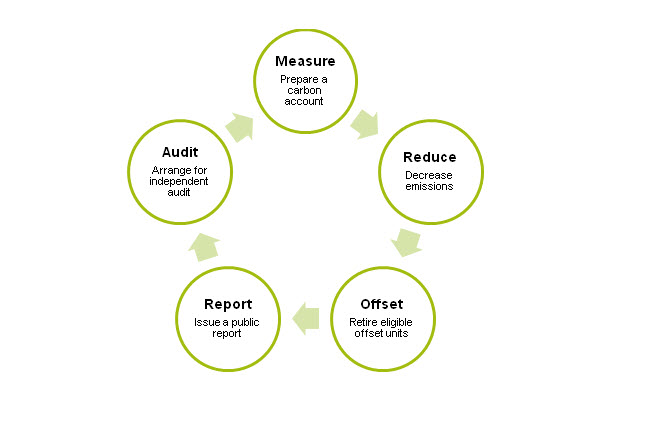Developers and building owners should review the new national voluntary standards that allow buildings and precincts to achieve carbon neutrality or net zero emissions.
On 30 November 2016, the Commonwealth Department of Environment and Energy released a draft National Carbon Offset Standard for Buildings and draft National Carbon Offset Standard for Precincts.
The draft Standards are voluntary standards for carbon neutral buildings and precincts in Australia and expand on the National Carbon Offset Standards that have been available for organisations and products and services since 2010.
The draft Standards will assist building owners to measure, reduce and offset any operational emissions and give tenants guidance as to the carbon neutrality of their building or precinct.
Offset principles
The draft Standards rely on carbon accounting principles outlined in the Greenhouse Gas Protocol - Global Protocol for Community-scale Greenhouse Gas Emissions Inventories. The principles for calculating the carbon account for a building or precinct include relevance, completeness, consistency, transparency and accuracy.
If emissions cannot be reduced by energy efficiency or renewable energy by a building or precinct, offset units can be generated to compensate for the shortfall. The Department's method of calculating offset units founded on the basis that one offset unit is issued for each tonne of emissions avoided or removed from the atmosphere.
The Department requires that the following integrity principles are a met to allow for an offset unit to be used under the Standards:
- additional: must not be emission reductions that occur in the ordinary course of events (including under any existing commitment or publicly agreed target);
- permanent: must be a permanent reduction in greenhouse gas emissions;
- measurable: methodology used to quantify the emissions reductions generated must be supported by conclusive evidence;
- transparent: access must be given to information about the project that generated the abatement (including methodology and monitoring arrangements);
- address leakage: system for generating the unit must deduct any material increases in emissions which impact the abatement;
- independently audited: creation of the unit must be independently verified by a qualified third party; and
- registered: unit must be listed and tracked on a public register.
The Department has confirmed that the following offset units have met the above integrity principles and are eligible for use under the Standards:
- Australian Carbon Credit Units issued by the Clean Energy Regulator under the framework established by the Carbon Credits (Carbon Farming Initiative) Act 2011 (Cth);
- Certified Emissions Reductions issued in accordance with the rules of the Kyoto Protocol from Clean Development Mechanism projects (subject to some exceptions);
- Removal Units issued by a country subject to the Kyoto Protocol on the basis of land use, land-use change and forestry activities under article 3.3 or 3.4 of the Kyoto Protocol;
- Voluntary Emissions Reductions issued by the Gold Standard (subject to some exceptions); and
- Verified Carbon Units issued by the Verified Carbon Standard.
Certification pathways
For buildings, the Buildings Standard allows for a carbon neutral claim to be made for base building or whole building operations. A base building claims allows for proponents to exclude tenant or occupant emissions, however the Department expects that whole building certification will become standard practice for the property sector.
The three options for certification of a building are:
- certification under the Commonwealth Carbon Neutral Program (whole building only): if a building is ineligible or does not obtain a National Australian Built Environment Rating System (NABERS) Energy or Green Star - Performance rating, carbon neutral certification can be applied for directly to the Department. In this case, a complete carbon account is established and eligible offset units can subsequently be purchased and cancelled to attain net zero emissions;
- extension of a NABERS Energy rating (whole or base building): a NABERS Energy rating captures almost all the data required for a complete carbon account for a building. The collection of additional data under the Buildings Standard and cancellation of eligible offset units allows for carbon neutral certification to be obtained from the NABERS administrator; and
- extension of a Green Star - Performance rating (whole or base building): a Green Star - Performance rating captures almost all the data required for a complete carbon account for a building. The collection of additional data under the Buildings Standard and cancellation of eligible offset units allows for carbon neutral certification to be obtained from the Green Building Council of Australia.
For precincts, the Precincts Standard provides that certification can be sought through the Commonwealth Carbon Neutral Program by applying to the Department.
Maintaining carbon neutrality
Under the draft Standards, the responsible entity is the person or organisation that has taken responsibility for making a carbon neutral claim or seeking carbon neutral certification. A responsible entity has obligations under the draft Standards, including carbon accounting, monitoring and reporting and purchasing of offset units, as required.
To achieve and maintain a valid and credible carbon neutral claim against the Buildings Standard or Precincts Standard, the responsible entity must follow this process:

Annually, the responsible entity must complete each stage above to support a carbon neutral claim (except for an independent audit, which must be conducted every two years).
Next steps for the draft National Carbon Offset Standard for Buildings and National Carbon Offset Standard for Precincts
The public consultation period for the draft Standards will close on 10 February 2017.
Building owners and developers should review the draft Standards and consider making a submission and/or formulating a plan to seek carbon neutral certification for a building or precinct on commencement of the Standards.
RELATED KNOWLEDGE
Clayton Utz communications are intended to provide commentary and general information. They should not be relied upon as legal advice. Formal legal advice should be sought in particular transactions or on matters of interest arising from this bulletin. Persons listed may not be admitted in all states and territories.

